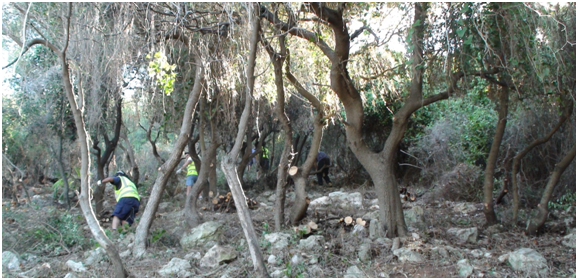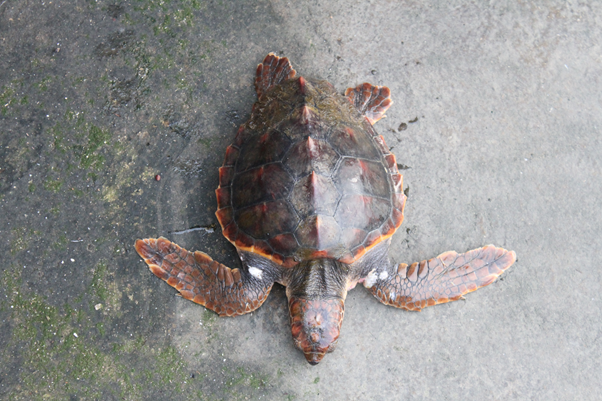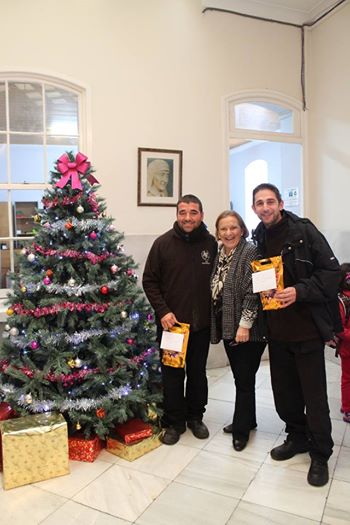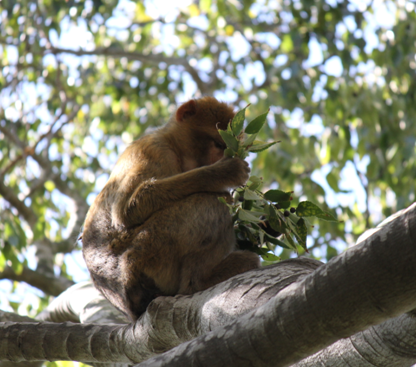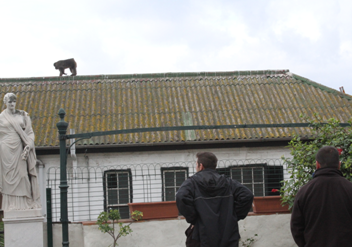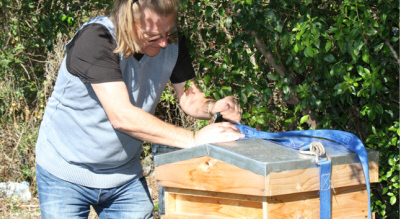Modern Monkey Management

The future of Gibraltar’s macaques is looking brighter than ever (see our facebook post). But it took more courage and determination than you might think, so in this article we’re going to talk though the journey to what is sure to become one of the greatest success stories for modern conservation and wildlife management.
How do you know you’re doing the right thing? For any project to be successful you must investigate solutions thoroughly. If mistakes are made along the way you must recognise and learn from them, and always be willing to adapt.
Ideals of Macaque Management Guided by Research
Dr Eric Shaw became interested in getting more students and independent researchers to study and work in Gibraltar, after hitting on the idea that if he lived for 1,000 years he still wouldn’t have all the answers, but with 1,000 students searching he might get closer.
Eric and Dr John Fa founded Medambios Environmental Consultants, which was contracted, between May 1989 and November 1992, to turn Queen’s Gate (now Ape’s Den) into a tourist attraction within the MoD restricted area of the Upper Rock. Whilst feeding was still the responsibility of the Military at this time, Medambios employed five wardens, at least two of whom were on site seven days a week, to guide tourists and stop illegal feeding. But Eric and John wanted to put scientific research at the heart of the project and so research students (MSc and PhD) were brought out to collect data on macaque behaviour and numbers, which could be used to inform future management. It was an almost ideal situation. But despite the success of the project, it was stopped in 1992 when responsibility for the whole of the Upper Rock passed from the MOD to the Government of Gibraltar. The area was designated a Nature Reserve, with an entrance fee, and the management of macaques became the responsibility of a new management company, Sites Management Ltd, contracted by the Gibraltar Tourism Agency.
It was clear that the Rock Apes (Barbary Macaques) were the biggest attraction for tourists; several new feeding sites were inadvertently created and by 1999 the population had increased to 350+. But during that time Gibraltar’s urban areas expanded and household waste increased. The Government received an enormous number of complaints about macaques in Town, despite the managers sending up to ten men at a time to chase the apes back towards the Upper Rock.
The Start of a 15 Year Investigation
The Gibraltar Ornithological and Natural History Society (GONHS) was awarded the Ape Management contract in December 1999, and Eric once again found himself working with Gibraltar’s Macaques. By this time Eric was a Director at GONHS, and had founded the Helping Hand Trust. He had also set up the Field Research Station which was used by researchers from a variety of disciplines. Working though Government was trickier than the original Ape’s Den project; politics by its nature forces a focus on quick fixes to secure votes, rather than devoting resources to the search for causes and long term solutions.
The only formal data collection requirements for the new Ape Management Team were to keep records of births, deaths, and troop sizes at the feeding sites, so that population estimates could be calculated. However Eric knew that they needed to keep data on the macaques as individuals, and study all the macaque groups, not just the ones at the feeding sites, in order to learn what exactly causes macaques to go into urban areas.
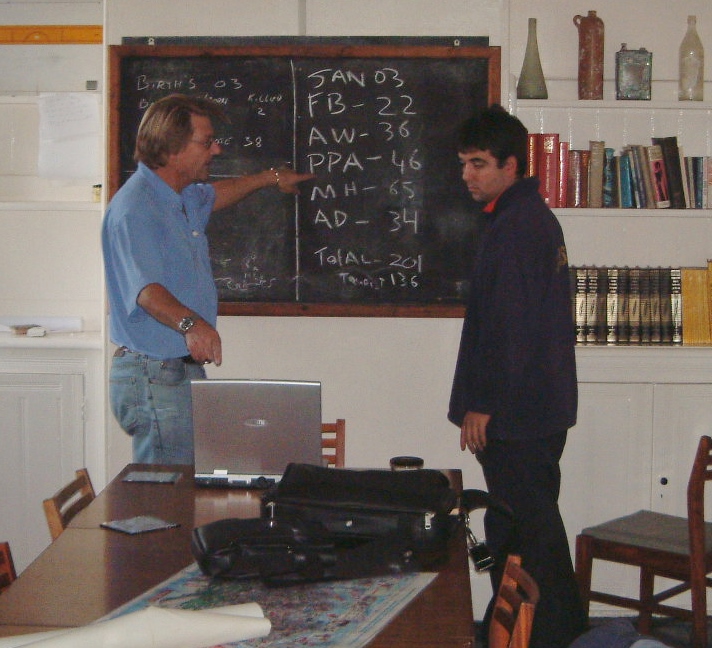
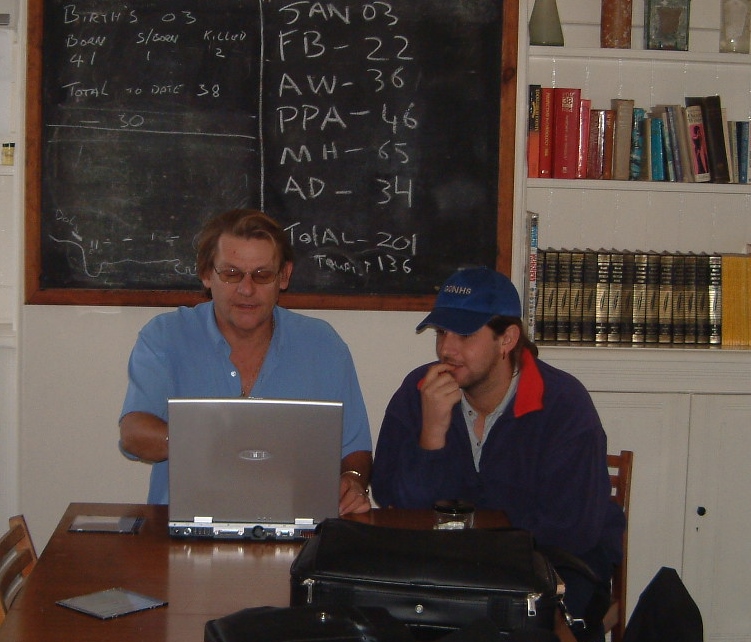
In order for data to be useful you need a lot of it. Eric told his new co-workers that they would need at least 10 years’ worth of data before they could analyse it and potentially use it as evidence for what the macaques are doing and why. Fortunately the other two members of the team proved equal to the challenge.
And now, after over a decade of data collection and research, we have enough information to be able to say with some certainty what is needed, and we are also able use the many published studies to argue their effectiveness to our sometimes (understandably) reluctant authorities.
In order to accomplish this investigation without interfering with normal daily activities, GONHS teamed up with the Helping Hand Trust to bring in researchers, both local and from all over the world, to study the Gibraltar macaque situation.
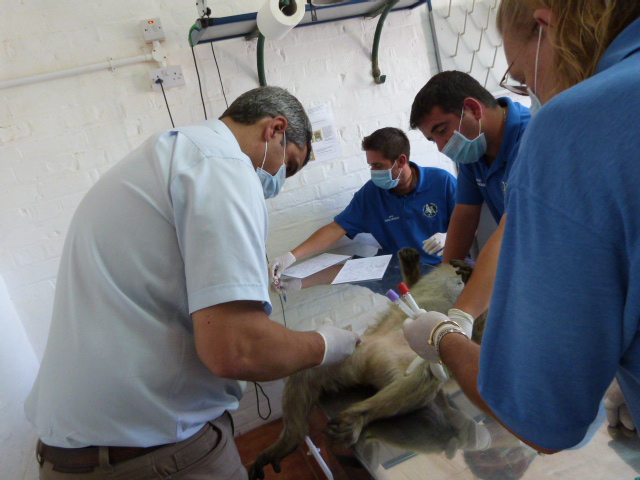
It is very rare it is to have an active, full time, management programme for macaques – in fact there are only two places in the world, Gibraltar and Hong Kong, which have long-established structures. The biggest difficulty in managing the ‘macaque problem’ was that all the commonly believed solutions were untested theories. During the last 15 years a lot of assumptions have been proven wrong. For example culling was often suggested as a quick fix solution. Which sounds logical – there are complaints about a macaque in town, remove that macaque and there will be no more complaints. But in practice it never worked very effectively. During the early years of the millennium, a troop of macaques was almost permanently located in urban areas. The order was given for the entire troop to be removed. After the mass cull there were no problems in that area of town for five years but after that five year period the area was again filled with macaques feeding in the same places; this exercise clearly showed that culling by itself cannot solve the problem. And of course it is ethically challenging for many of Gibraltar´s humans.
The longest held belief is that macaques come into urban areas searching for food because they are hungry – which again seems logical enough given that when in town they are usually eating something: fruit from trees, leftover food in bins, etc. This was the theory that led to official food provisioning being started in 1918. However it didn’t really work even then; historical records show that within months complaints were received that Flat Bastion was “infested with apes”. But the theory looks so good that provisioning has been continued ever since, and presently over 100kg of food is put out every day for the (<200) monkeys.
It wasn’t until 2009 that the theory was actually tested. Collin McCabe came to Gibraltar to study the ranging data of one of the troops. But as that troop had already been measured the team decided to do an experiment and test the food theory for the first time. For three months that particular group of macaques wasn’t fed and Collin carefully recorded where they went. Everyone, including arguably the world’s top macaque expert Professor Agustin Fuentes and the local Macaque Team, was sure that the troop would increase their range and visit town more often. Instead, to everyone’s amazement, the opposite happened. The Macaques stopped visiting town and instead spent all their time in a small area of woodland foraging for wild foods. It appeared that the extra food available through the provisioning was allowing the macaques to travel without worrying about their next meal. This was a revolutionary way of looking at the problem.
Unfortunately the truth can be hard to tell. The authorities at the time didn’t want risk stopping feeding because they were unsure of how the electorate would take it, and now it is almost impossible to implement because illegal feeding is so common. All illegal feeding and open food waste would need to be eliminated, before shrinking the food provisions down to a small amount near tourist attractions, in order to encourage the macaques to forage naturally growing vegetation.
Humans seem to be very similar in this respect, how many people reading this have eaten in a restaurant even when they have a fridge full of food at home? Everyone? There is also plenty of free food for humans up the Rock- wild carrots, onions, fennel, herbs and carobs grow there and the waters are full of fish and crustaceans. It is perfectly possible for a family to live off the land and never shop for food in Gibraltar, but the time needed to search and collect enough for a meal would require all the hours of daylight. People with no other means of support would prefer to beg for money in the street or dig for leftover food in bins than spend 10 hours looking for vegetables up on the Rock.
Our research work is a never-ending task and we continue to learn more surprising and interesting information about our furry cohabitants on the Rock of Gibraltar.
Macaque management in Gibraltar is in good shape, and we’re enthusiastic about the future, though there are still more steps to be taken. We’re grateful to our collaborators past and present; below are some of the Researchers and Students who have worked with our Team:
Ruth-Sophie Sonnweber did her dissertation on the ‘Effects of Tourist Pressure on the Follicular Cycles and Reproductive Behaviour in Female Barbary Macaques (Macaca sylvanus)’
She is currently studying towards her Doctorate at the University of Vienna
In her Acknowledgments she wrote: ‘…Eric Shaw, who offered me the possibility of working in the field. His support in the field and his interest in my work always motivated me. Many thanks for sharing all the knowledge about the world of the Barbary macaques. Dale Laguea and Damian Holmes for their visits at the site, for their friendship and for making my stay in Gibraltar unforgettable and joyful…’
Ruth had the pleasure of spending both her Birthday and Christmas in Gibraltar.

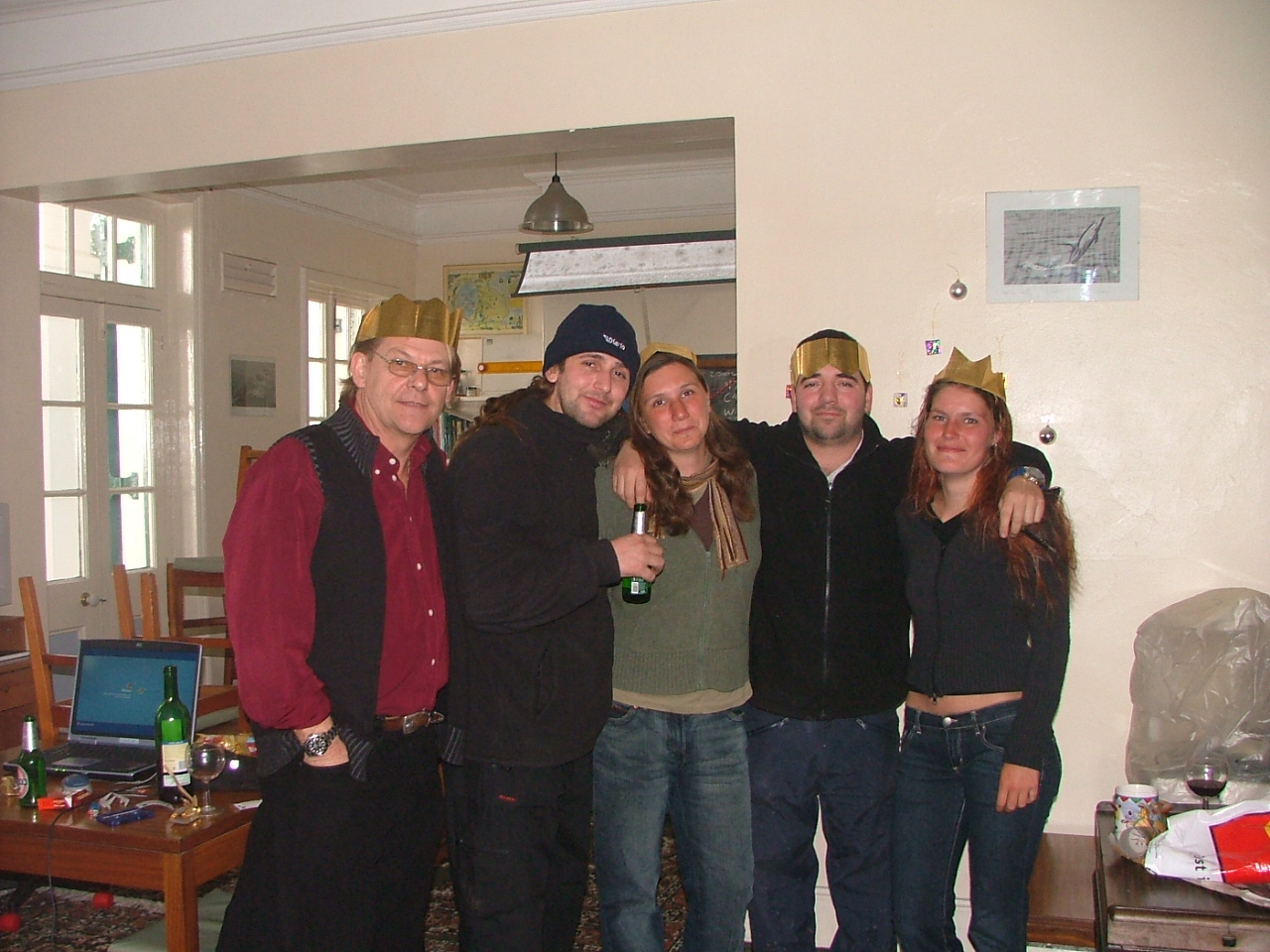
Liesl Mesilio, from the Imperial College of Science Technology and Medicine, completed her thesis ‘A Geochemical Reconnaissance survey of soils in Gibraltar’ in 2000. Now Dr. Mesilio-Torres, she is the Chief Executive Officer at the Department of the Environment in Gibraltar
A marine biology student, Brian J. Gomila, was inspired to do a Master’s Degree in 2004 after being placed with the Helping Hand and GOHNS Ape Management Team for 12 months though a local employment scheme. His dissertation was titled: ‘Does Tourist Pressure influence group-fission among Barbary macaques (Macaca sylvanus) in Gibraltar? An investigation into Conflict Management during Resource Competition’
Brian wrote in his Acknowledgements:
“There are many people I would like to thank in Gibraltar who in many respects facilitated the completion of this study. The involvement of Eric Shaw from the Gibraltar Ornithological and Nature History Society (GONHS) with the macaques in establishing data banks on troop sizes, kinship and producing field guides for identification, provided the initial impetus for my personal involvement with the Gibraltar Barbary macaques, over 2 years ago. I would like to thank him and his team of ‘ape keepers’ and congratulate them for the dedicated and necessary work they carry out.”
Serendipitously, Brian’s supervisor, Professor Stuart Semple, had also researched his PhD Thesis on ‘Female Copulation Calls in Primates’ in 1998 with the Macaque Management Team in Gibraltar. Professor Semple was also the tutor for Adrian Shaw, Eric’s son.
As we approach the start of the academic year, and students and researchers start planning new projects we would like to assure you that no matter how small your investigation is, it is always valuable.
